What Is Conversion Rate Optimization?
Conversion rate optimization (CRO) is the process of implementing different tactics to increase the percentage of visitors who convert (take a desired action) on your website.
Conversions can be many different activities, depending on what you want to achieve.
That can include:
- Making a purchase
- Signing up for a free trial
- Booking a demo
- Subscribing to a newsletter
- Creating an account
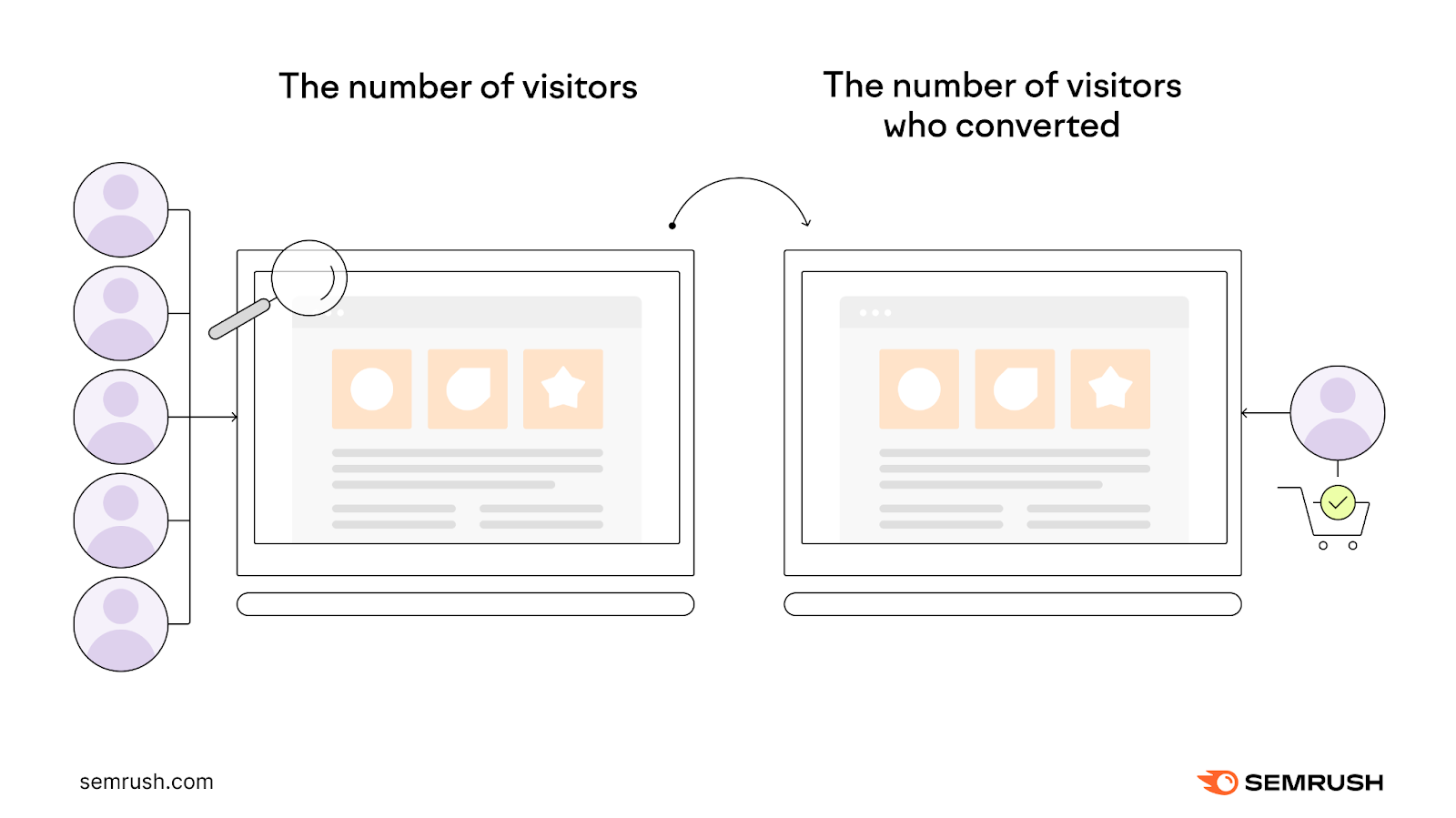
Optimizing conversion rates on your website can have a direct impact on your bottom line.
And while other marketing disciplines like search engine optimization (SEO) usually take months to show results, CRO tactics can prove effective almost immediately.
How Is Conversion Rate Calculated?
To calculate the conversion rate for any page or for your entire website, divide the total number of conversions that occurred on your page or site during a specific time period by the total number of visitors to your page or site during that time period. And multiply the number by 100 to get a percentage.
Here’s what the formula looks like:
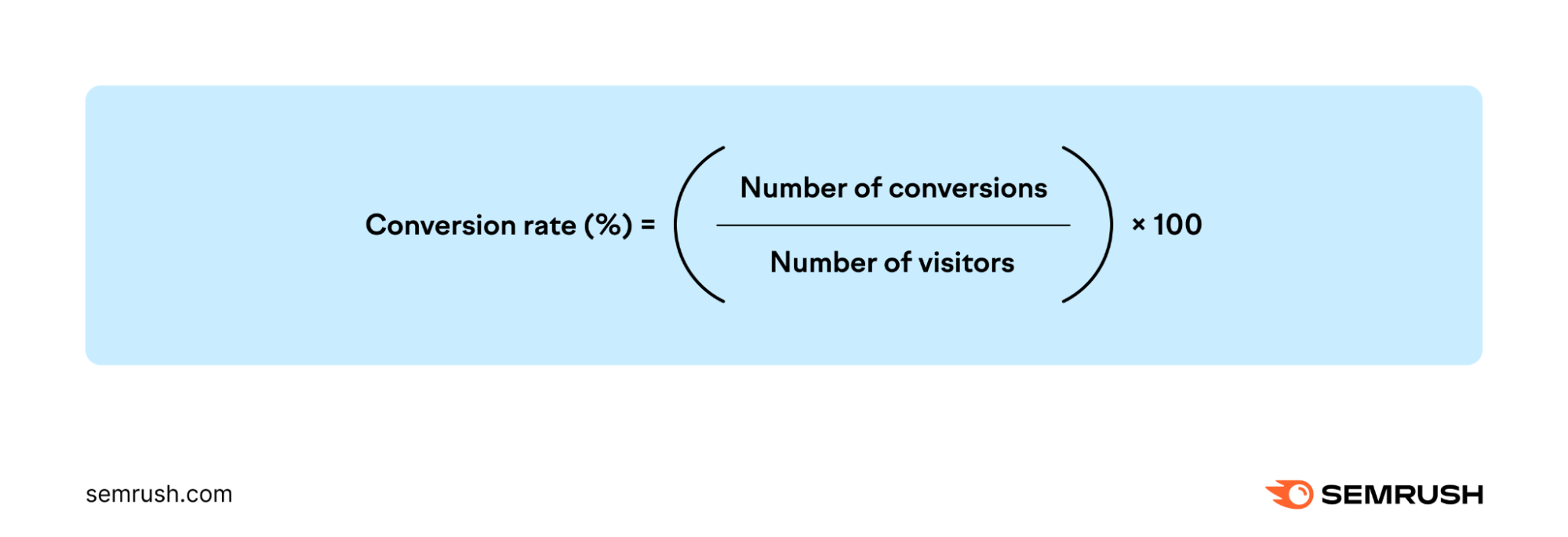
Once you’ve calculated your conversion rate, you may be wondering whether it’s a good number.
Comparing yourself to some industry benchmarks can help you understand how strong your performance is.
The average conversion rate for B2C ecommerce businesses across all industries was 2% in the first quarter of 2023. And average conversion rates in the B2B space range from just over 1% for SaaS companies to over 7% for legal services.
Now, let’s dive into why it’s so important to optimize your pages to improve this metric.
Benefits of Conversion Rate Optimization
Website conversion rate optimization benefits everything from your marketing costs to the sales process.
Let’s explore these benefits more in detail:
- Lower cost per acquisition (CPA): CRO can lower your overall CPA because you won’t have to invest in as many channels (especially paid ads) and tactics to drive conversions
- Greater understanding of customers: CRO involves thorough research that will help you better understand your audience and what motivates them to take action
- Improved competitive advantage: CRO helps your site’s pages drive more results than your competitors’ non-optimized content
- Increased sales and revenue: CRO gets more users to convert, meaning it can help generate more sales and boost your revenue
- Lower effort activity: CRO leverages existing content to convert more users, so you don’t have to start from scratch
9 Conversion Rate Optimization Techniques
Let’s dive into some concrete ways to boost the number of website users who convert.
Tailor Your Messaging to Your Audience
Understanding your audience is the starting point of conversion rate optimization. Because this knowledge will allow you to tailor your messaging to their pain points and needs.
Semrush’s One2Target tool can help you uncover valuable insights about your target audience.
Open the tool and enter up to five competitors. Then, click “Analyze.”

First, you’ll see the “Demographics” tab. Which shows information about the audience’s age, country, etc.
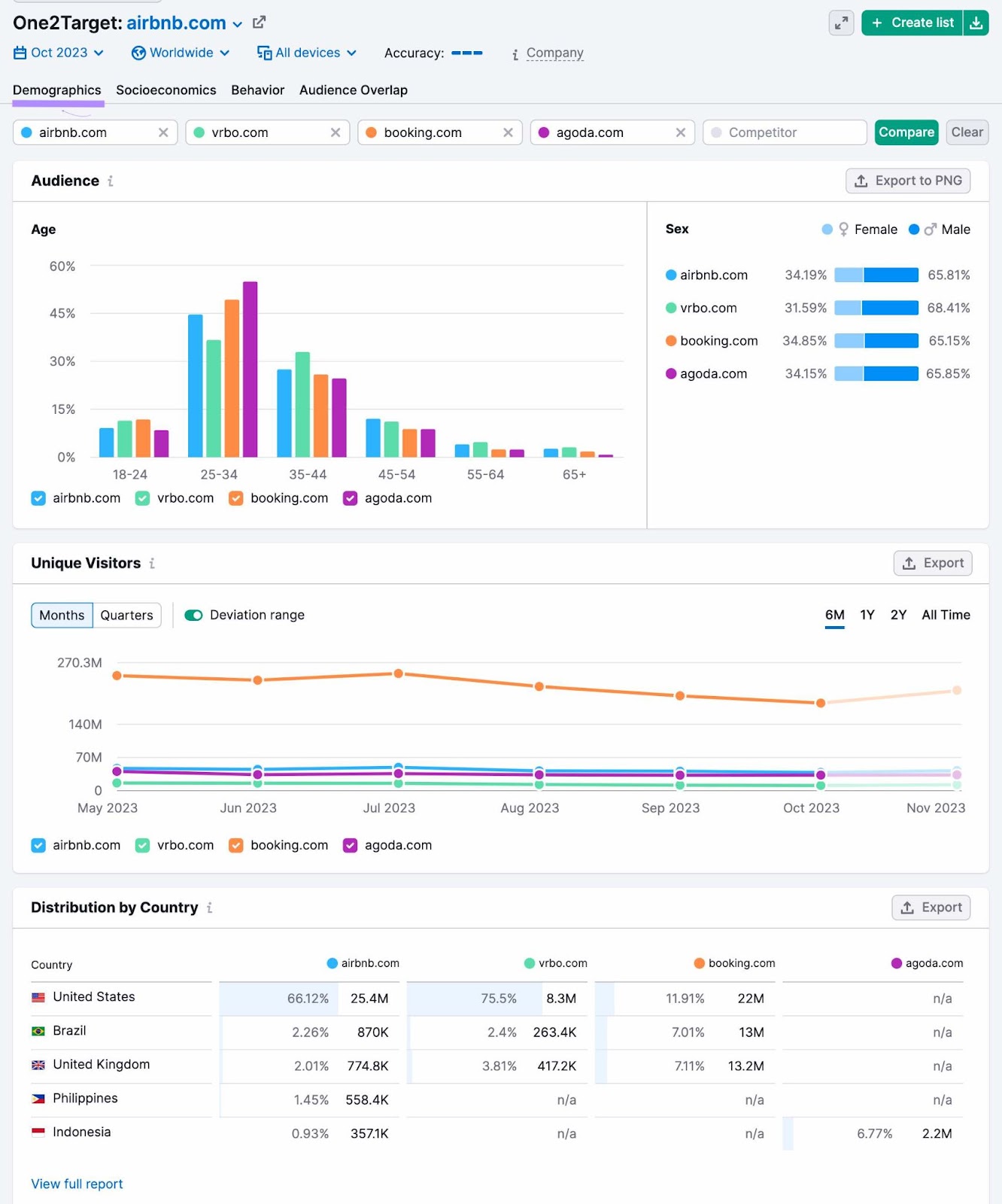
Click “Socioeconomics” to learn about the audience’s employment status, educational level, and more.
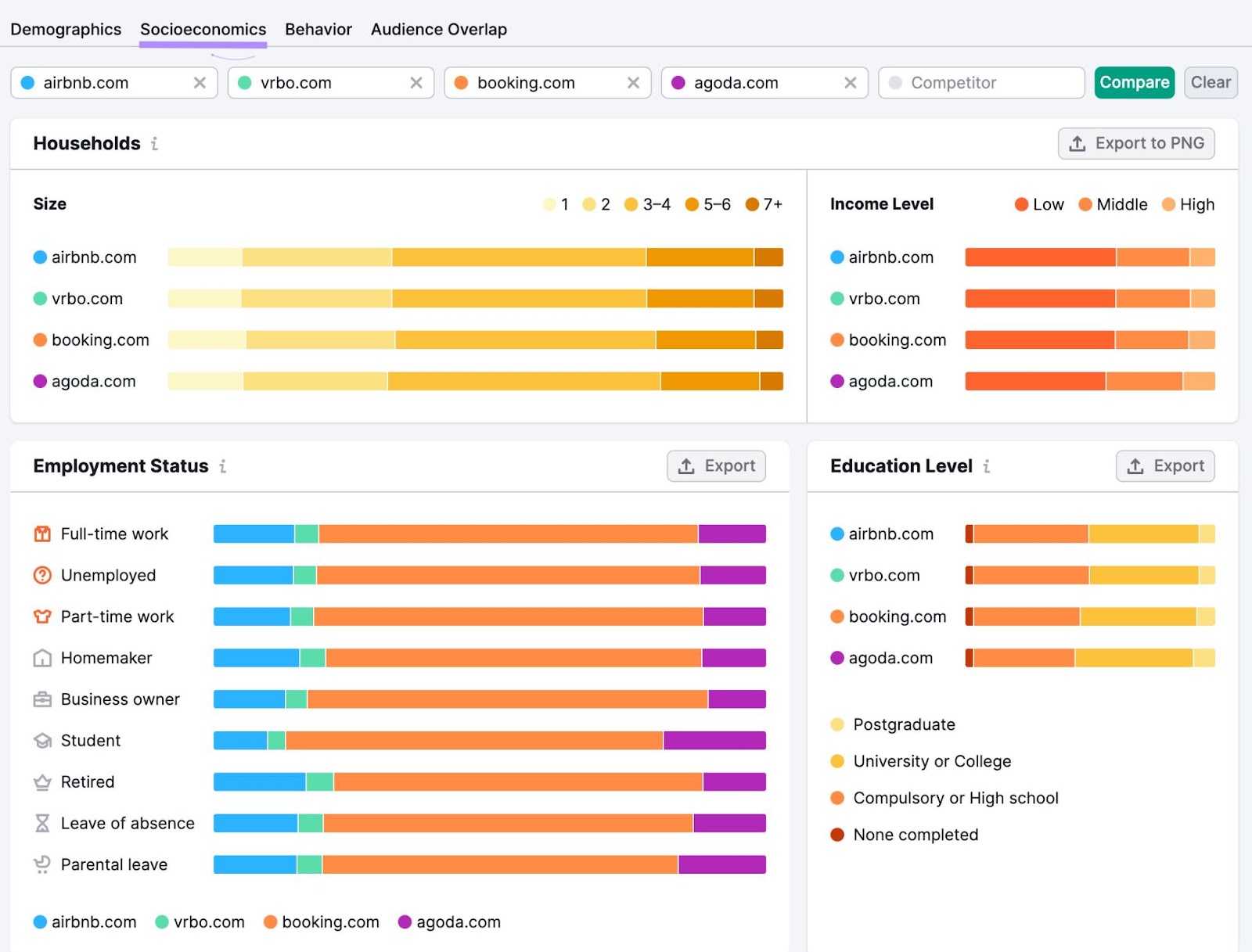
Now, head to the “Behavior” tab. Where you can learn about the audience’s social media preferences, interests, and which type of device they use.
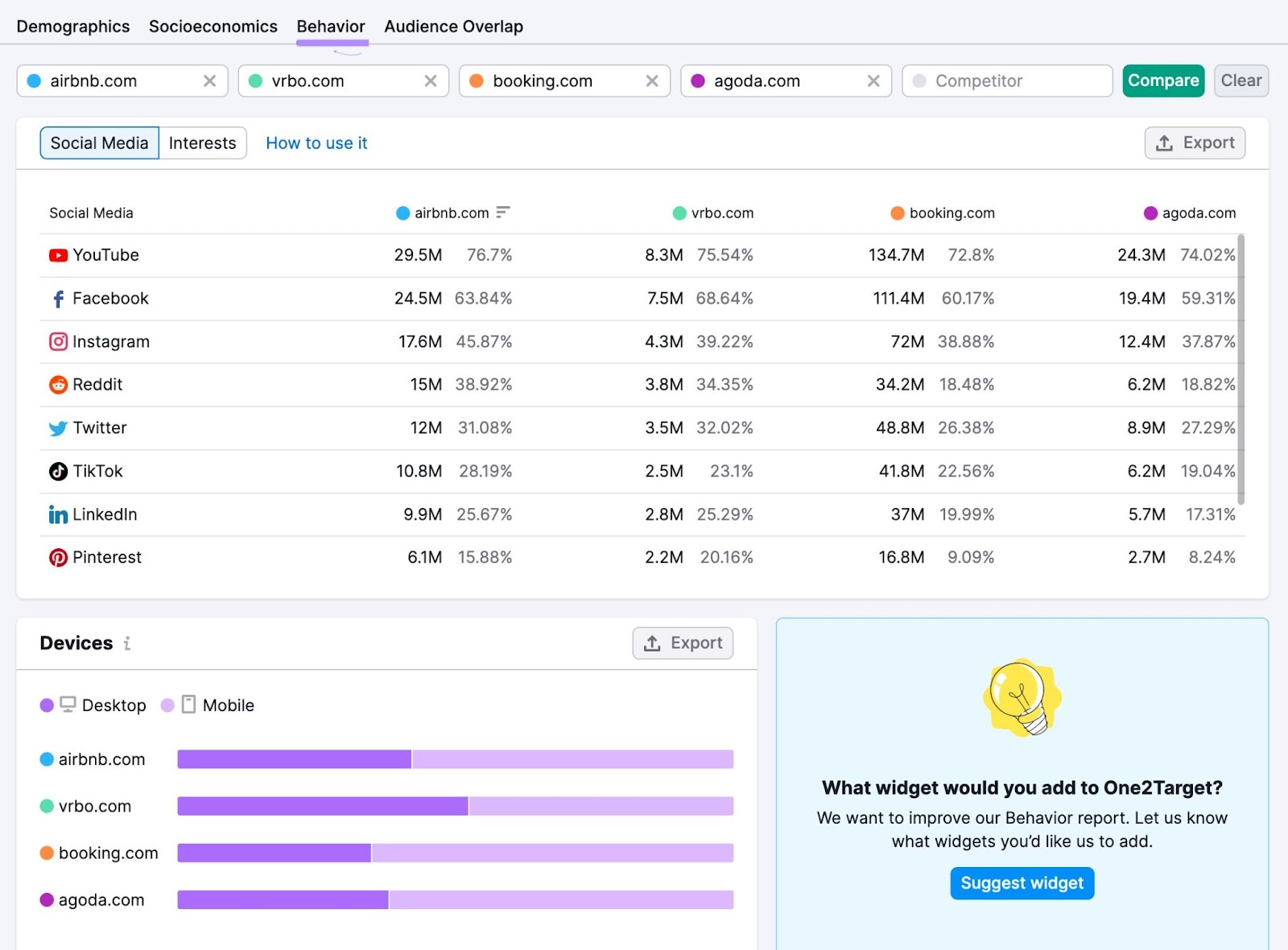
Let’s say your analysis reveals this audience is primarily between the ages of 35 and 44, works full time, and lives in a household with four or more people. This suggests that your messaging should focus on the needs of working parents.
You can also learn more about your existing customers by conducting surveys. Which can give you immediate feedback about your website.
You can add a small survey that pops up when a customer is about to leave your site. Or one that sends to their email along with their purchase confirmation.
Survey results like these may give you an idea of why a customer left without converting. And help you identify ways to improve.
To increase the number of visitors who complete your survey, make it short and simple. You can say, “Take this one-minute survey.” To let them know you won’t be taking too much of their time.
Align Your Content with What Users Expect
To drive conversions, your webpages need to line up with what your audience wants. So, consider how they arrived on the page you want to optimize.
If they clicked on an ad, users will expect a landing page that’s consistent with what they saw in the ad.
For example, the landing page for an ad that promises a 50% discount on a specific product should similarly make that product and discount clearly visible. Any deviation may confuse the visitor and cause them to leave.
For webpages that are primarily intended to gain organic traffic through keywords, focus on search intent.
Search intent is the motivation behind a user’s search engine query. It represents what the user wants to achieve.
Why does search intent matter?
Because search engines like Google aim to deliver the most relevant, useful results to users. So, focusing on intent when creating content can lead to higher rankings, more traffic, and more conversions.
Use Semrush’s Keyword Overview tool to analyze the search intent behind keywords to make sure they’re a good fit for the pages you want to optimize for conversions.
Let’s say you own a sports footwear store and are considering focusing on the keyword “best running shoes” for a page comparing different options.
Open the tool, enter your target keyword, select a location, and click “Search.”

In the “Overview” dashboard, you’ll see the type of search intent behind the keyword.
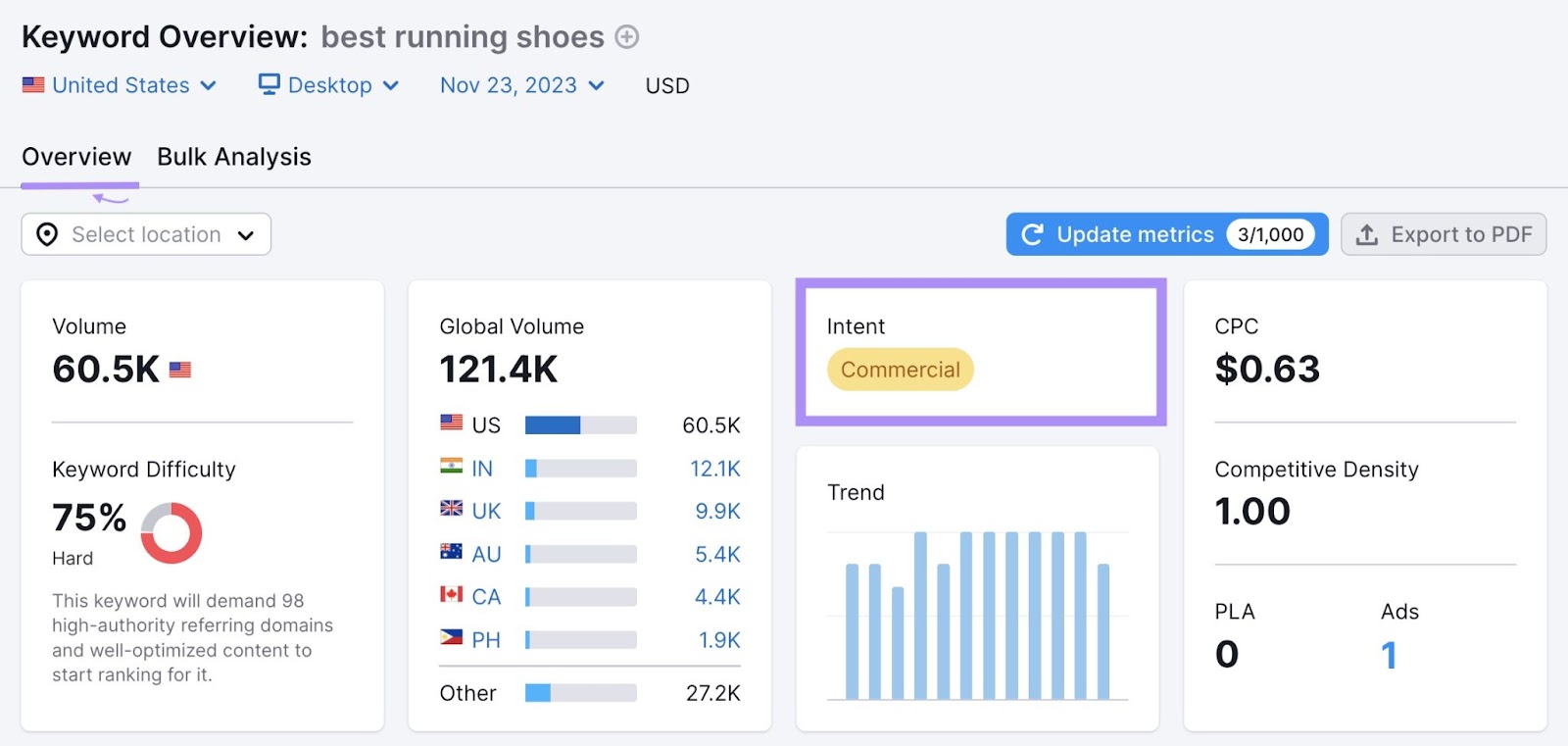
Then, scroll down to see what the search results look like. You can then analyze the top-ranking pages to better understand what searchers want.
By now, it’s clear that people searching this term are interested in doing research rather than immediately buying. Which means your intended page aligns with their intent.
Conduct Tests
Using A/B testing (also called split testing) on your pages helps you quickly identify what does and doesn’t encourage conversions on your website.
A/B testing compares two versions of a webpage that differ by a single element. Like a headline or a call to action (CTA).
Maybe you want to compare a subheading with a broader appeal against one intended specifically for working parents. Or test whether reducing the number of form fields will increase submissions.
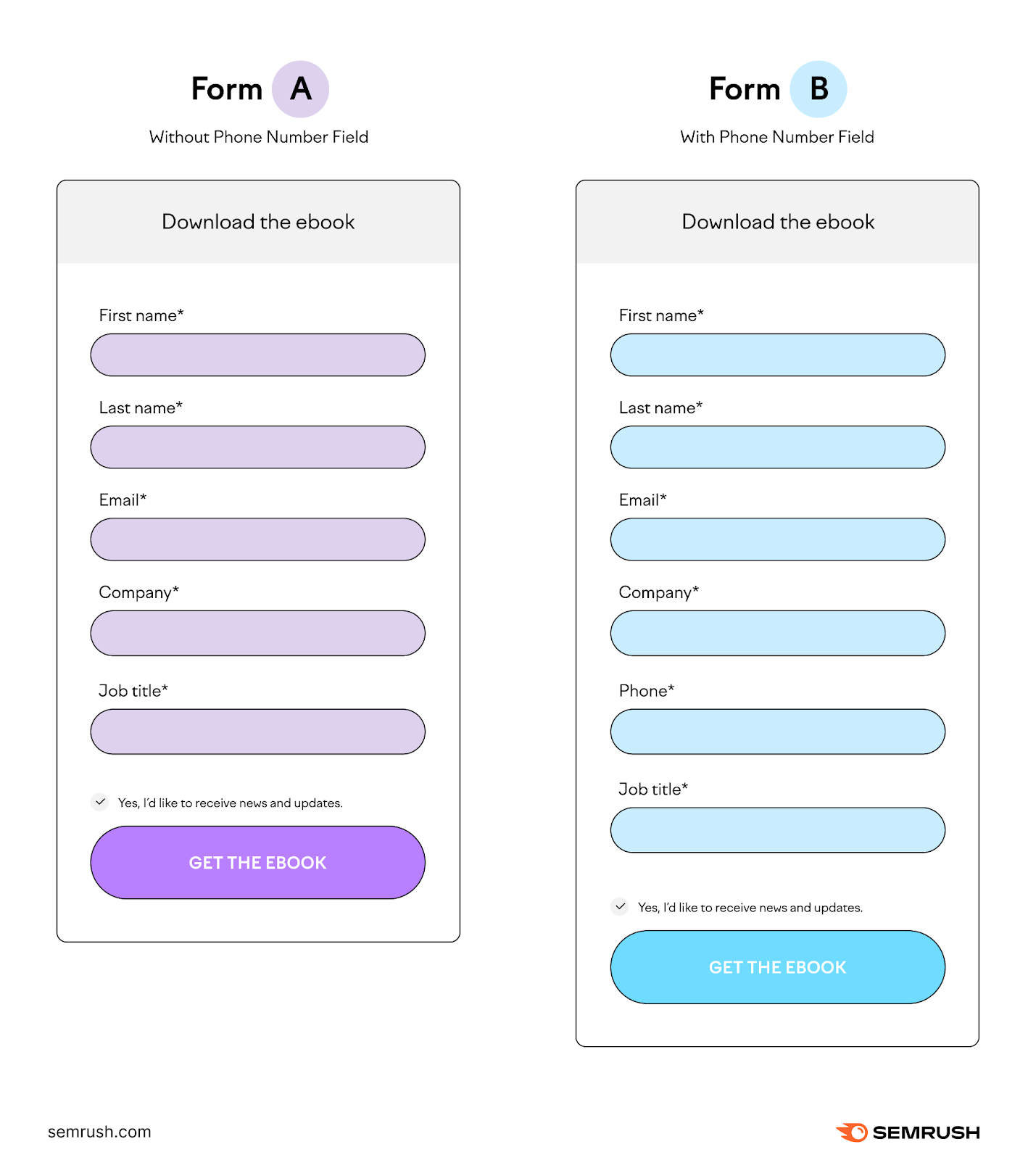
Some other elements you can A/B test include:
- Images
- Body copy
- Form placement
You can use Semrush’s SplitSignal tool to run A/B tests for your webpages. Let’s say you want to test the impact of using all capitalized text for the main heading (H1) copy on your product pages.
Open the tool and click on “Create new test”, then add a name and description.
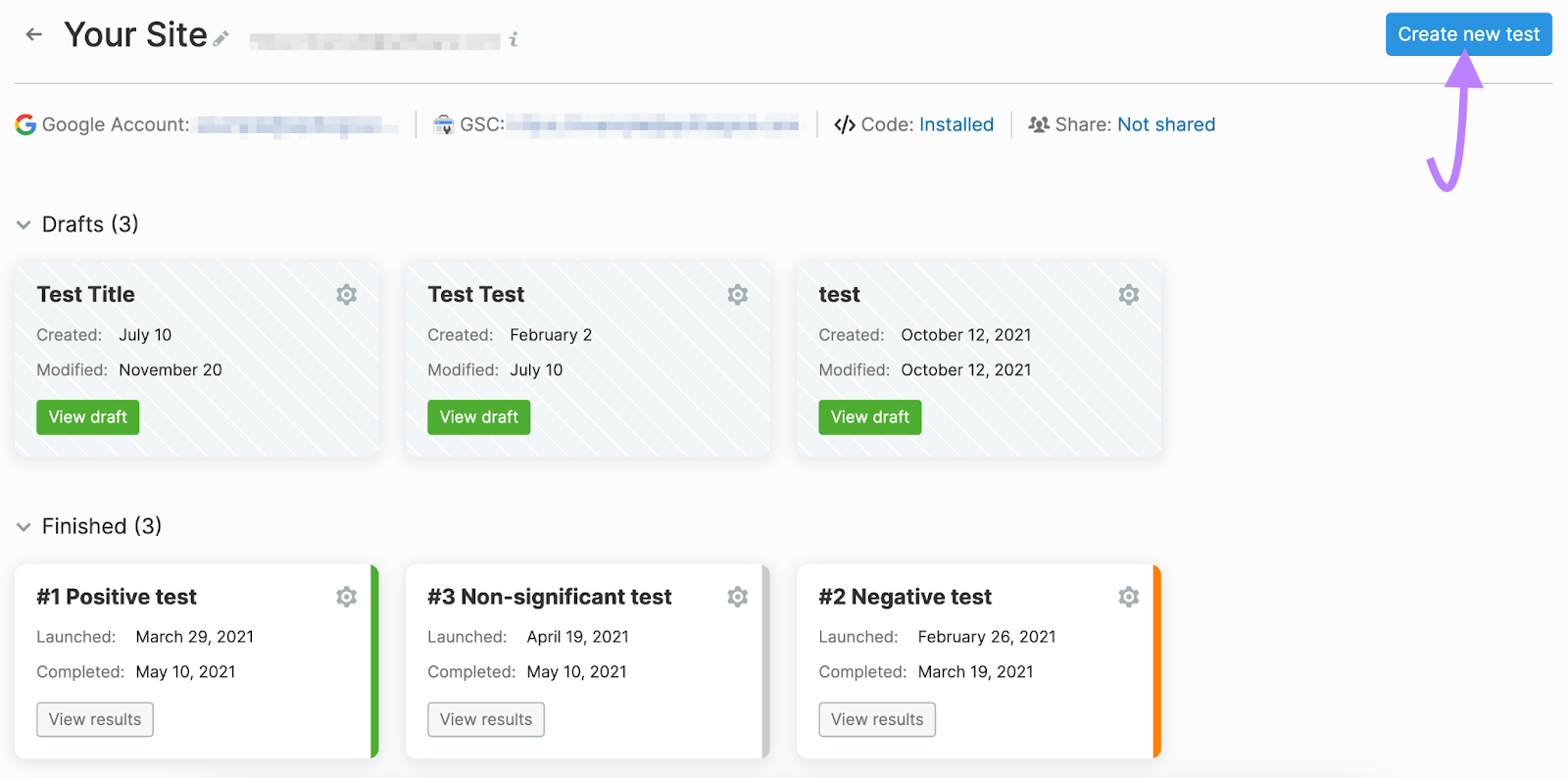
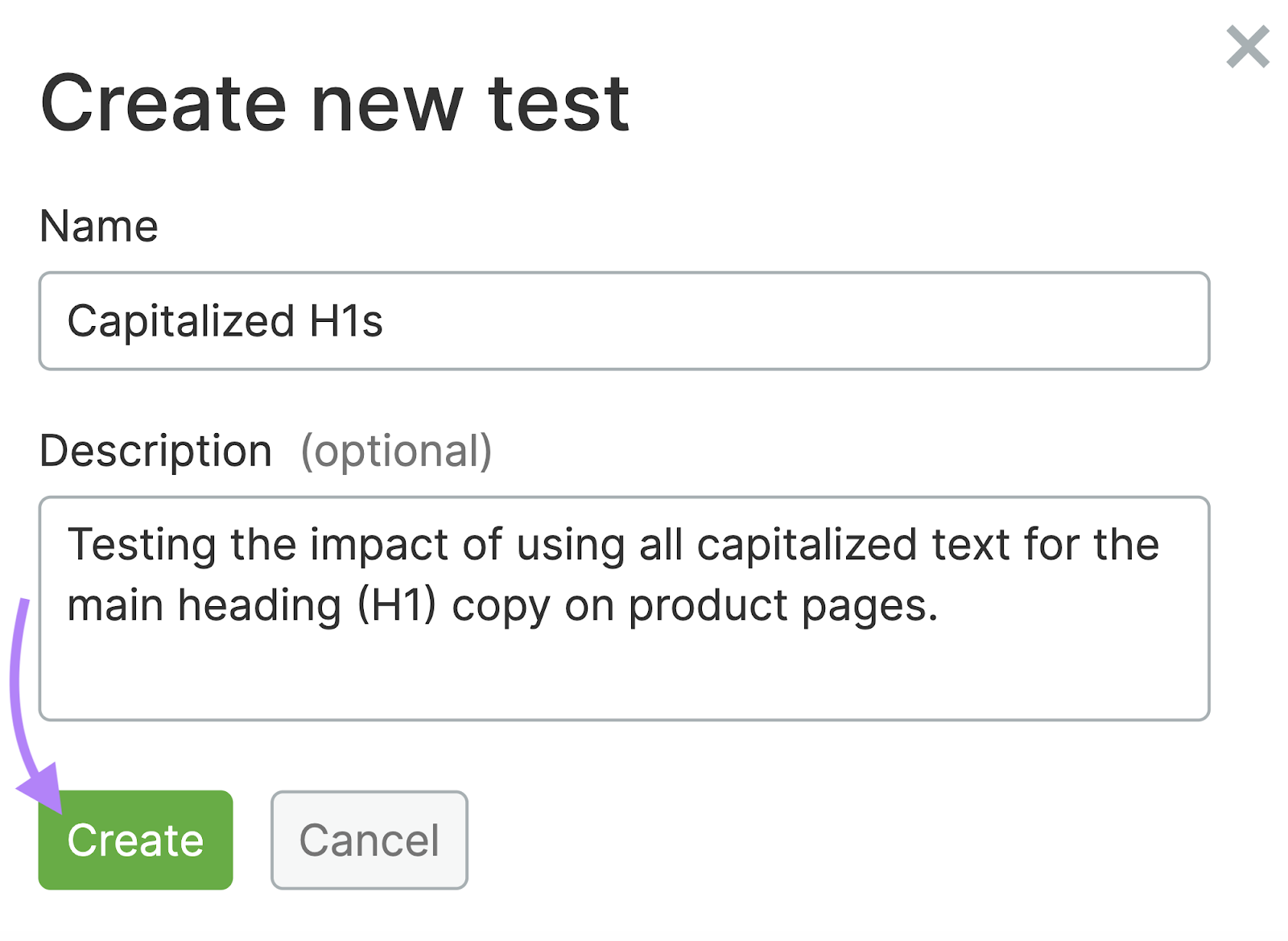
Next, choose the website section you’d like to inspect. This should be specific to the URL structure for the webpages you’re testing.
The next step is to filter for the specific pages that you want to test. By selecting “Contains” from the second drop-down menu. And making sure the correct URL path is entered.
Then, click “Next.”
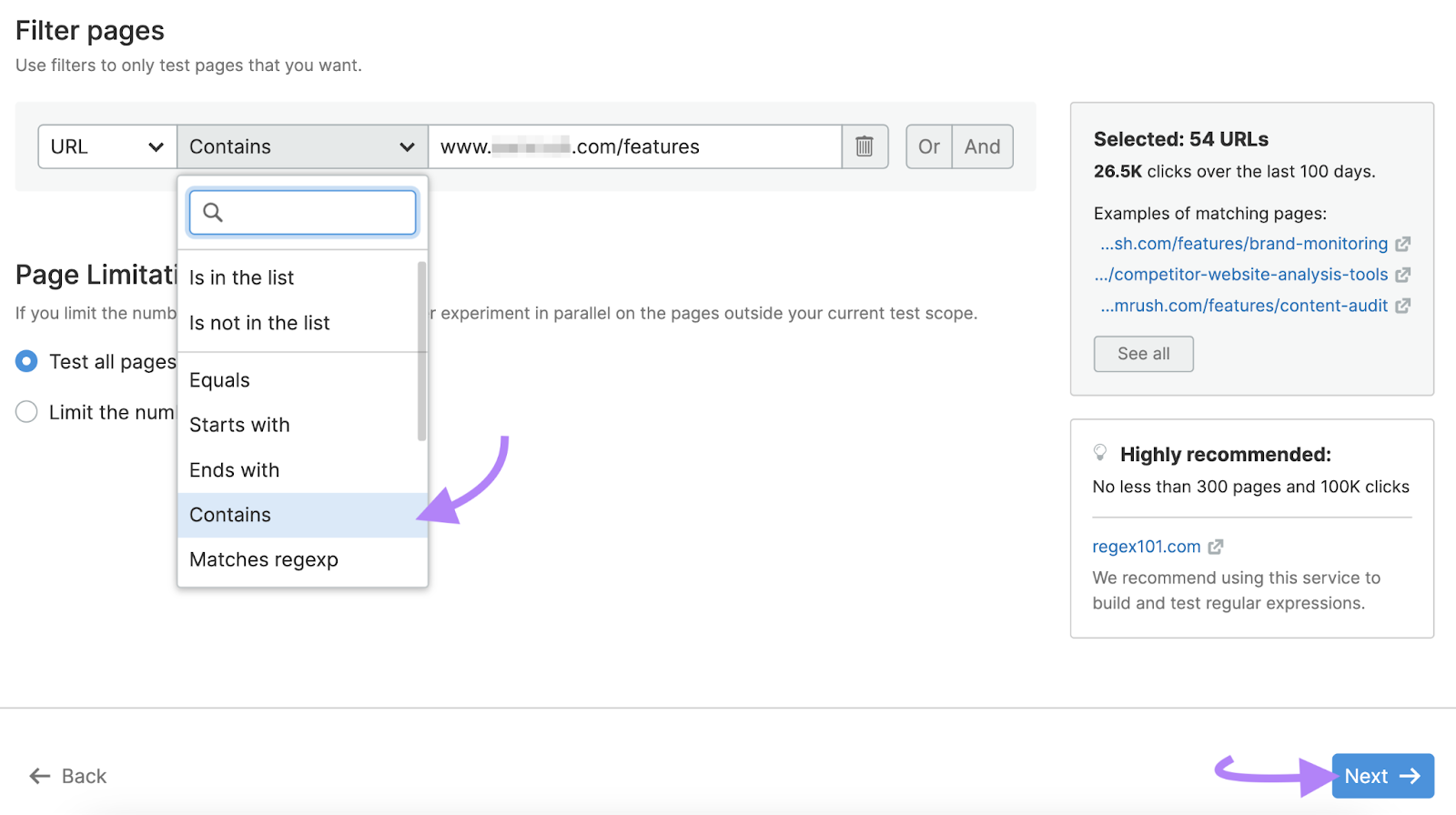
Under “Rule #1,” select “Change the text content of the element” and enter “h1” in the “CSS selector” field.
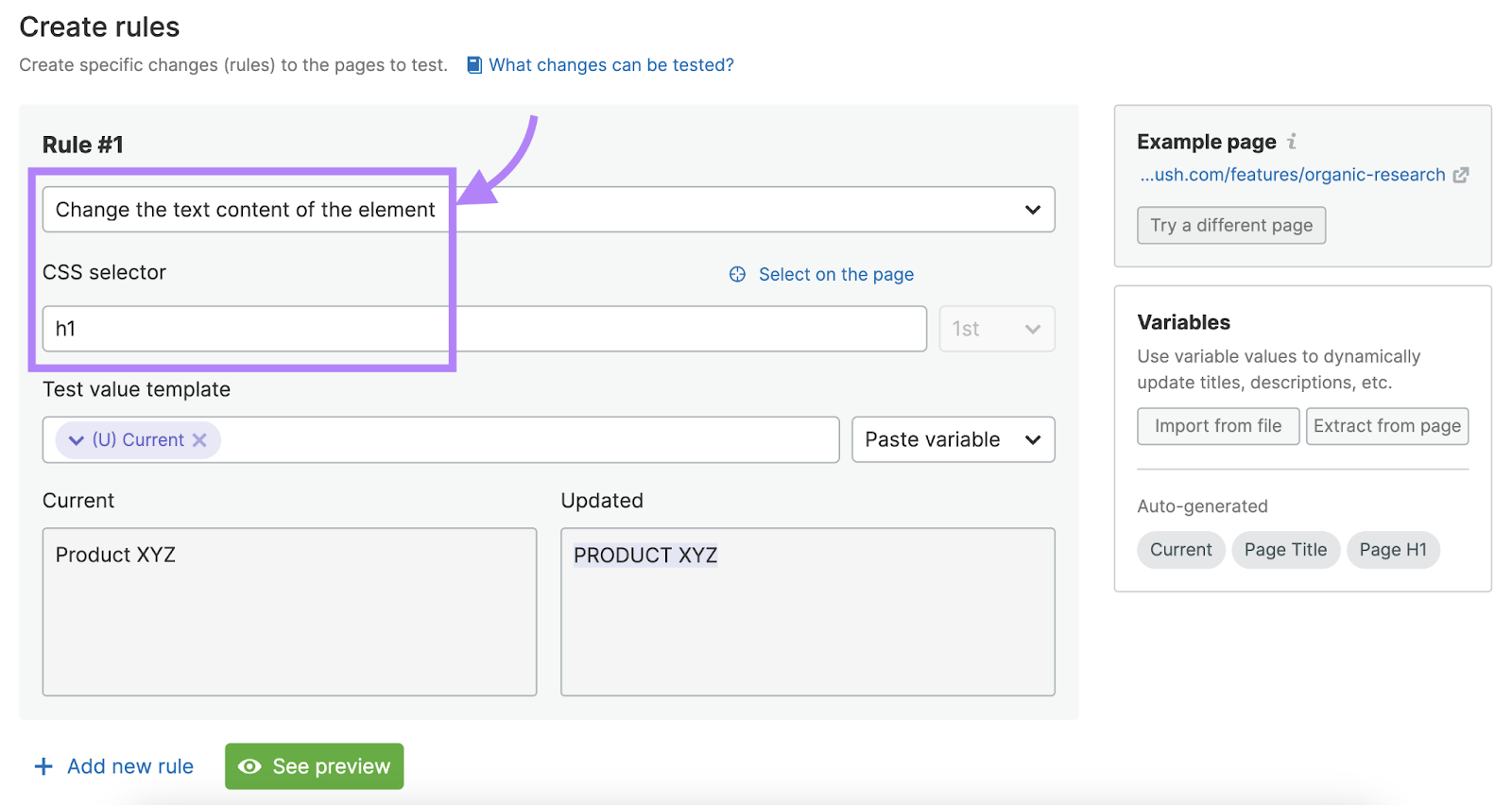
Click the “Paste variable” drop-down menu and select “Current.” And then click the drop-down caret next to “Current” and choose “UPPER.”
Then, click “Next.”
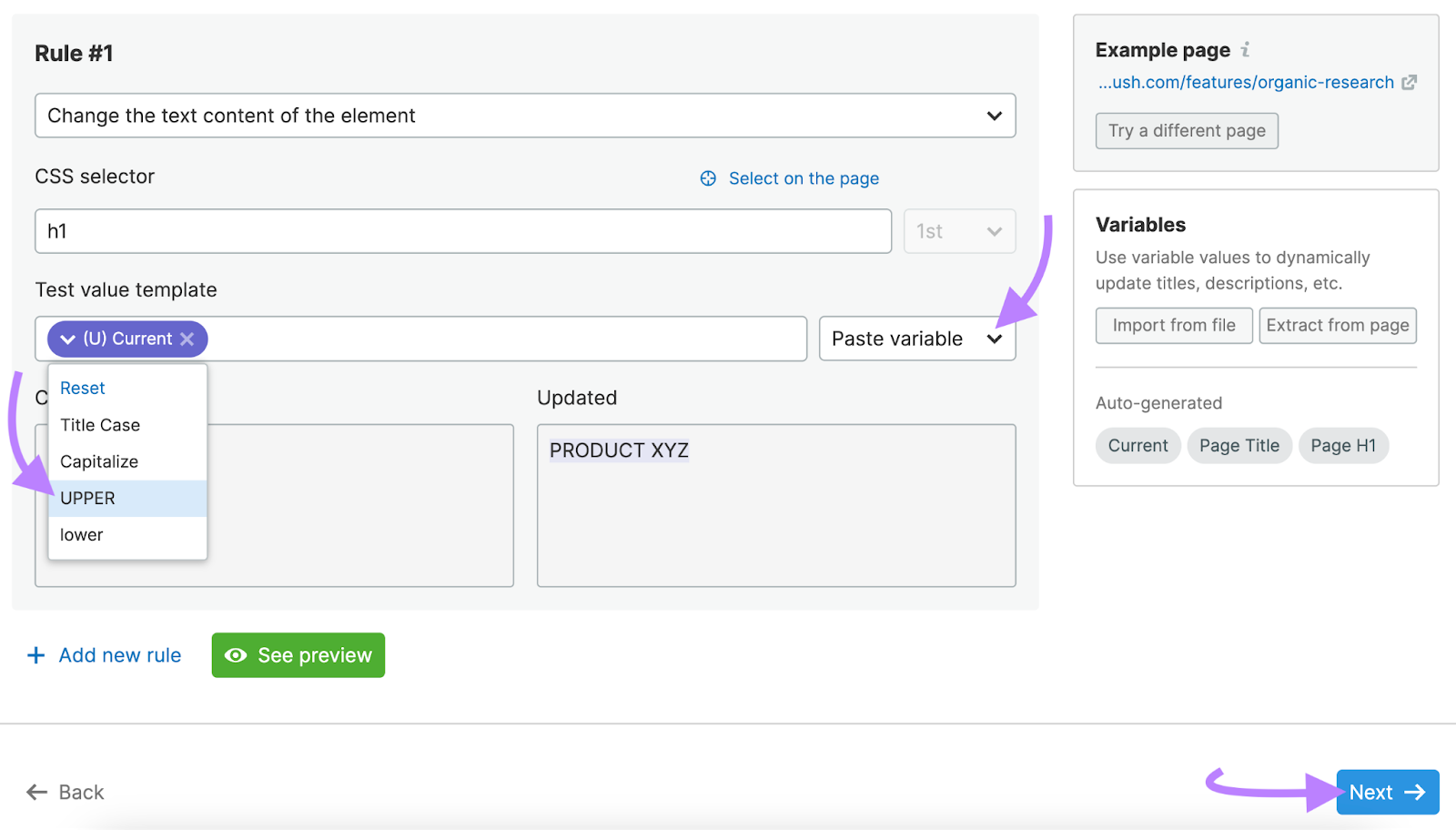
Choose the duration for your test, review other elements, and click on “Launch.”
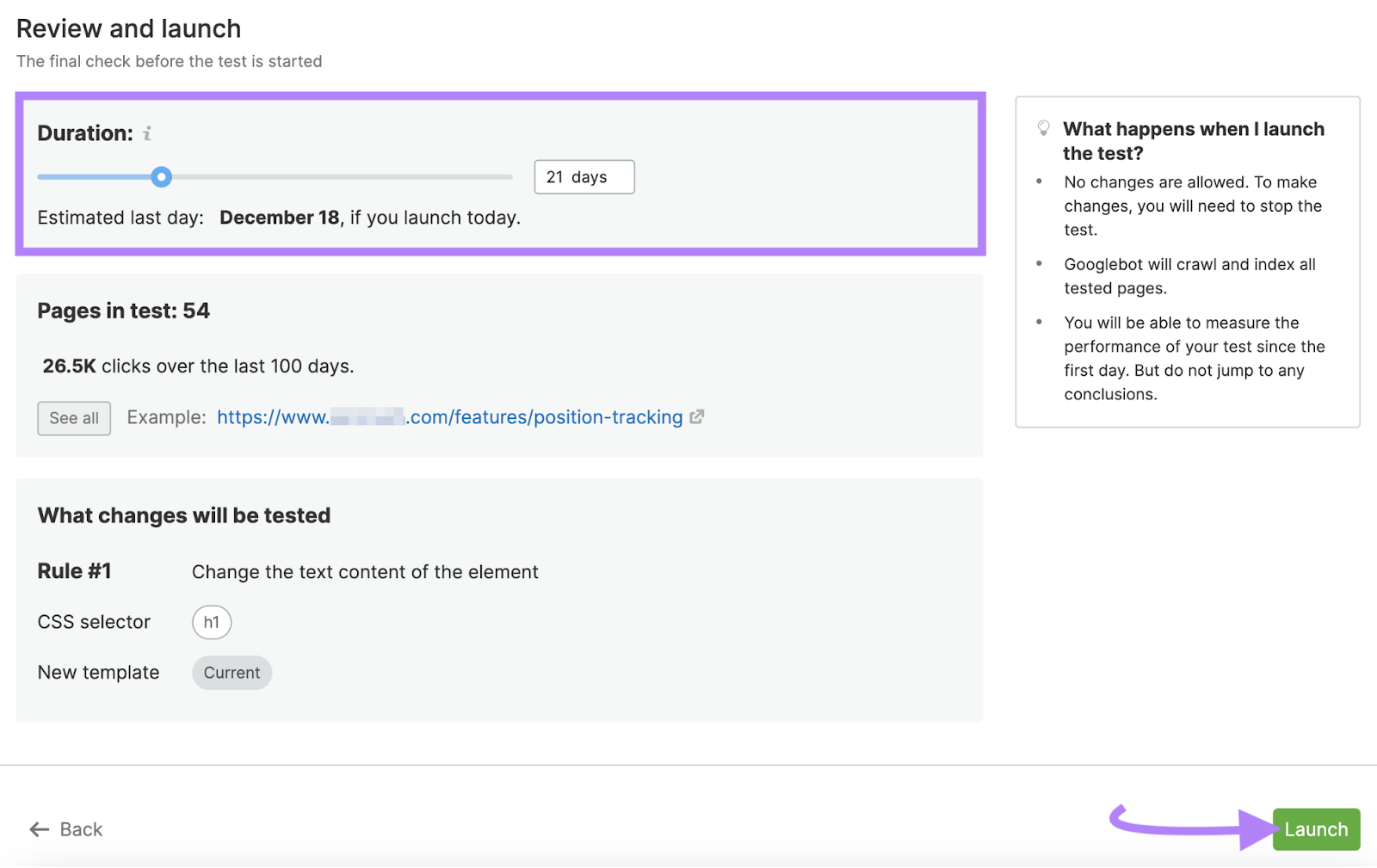
You can then review the results once the test has concluded. To see what impact the capitalization change had.
Diversify Your CTAs
Using calls to action in multiple forms and locations across your pages may increase the chances of a visitor converting.
For example, blog posts often have a CTA in the conclusion. But that could mean you’re missing out on opportunities to convert users who may be interested in your brand but don’t read the entire page.
Similarly, CTA banners may sometimes be ineffective because people scroll right past them given how similar their appearance is to ads.
But if you use a combination of CTA buttons, in-text CTAs, banners, etc., you give users multiple chances to convert.
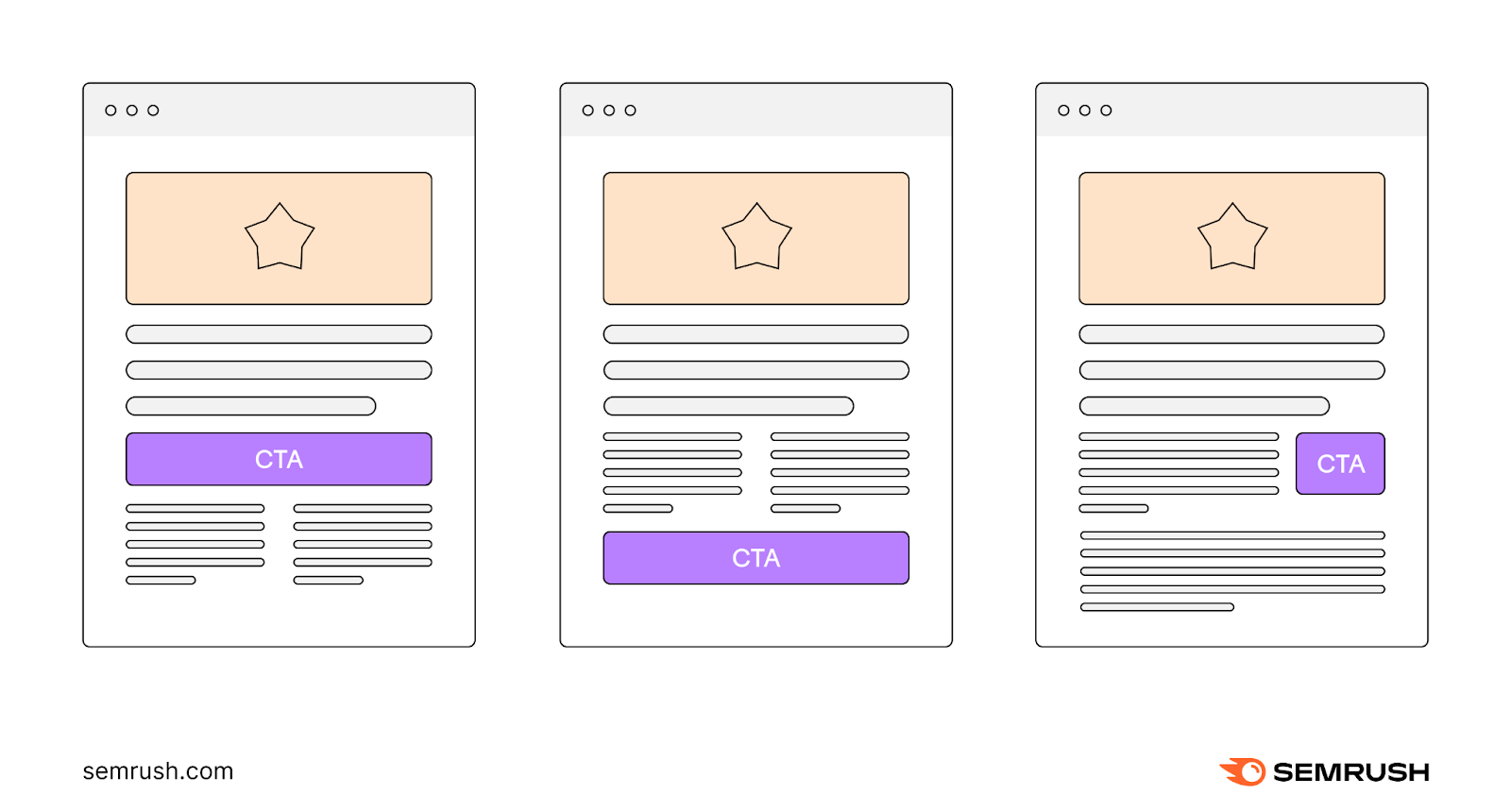
Remove Distractions When Possible
There should be one prominent CTA on your page with little to distract from it. To ensure optimal chances for conversion.
Take a landing page designed to drive demos, for example.
Your goal is to have the user book a demo. But if there are other links like a navigation bar, that may distract users from taking this action because it diverts their attention.
By removing the navigation, you reduce distractions and keep the focus squarely on the desired action.
Take HubSpot’s landing page for a guide to build an effective LinkedIn profile. There’s no navigation bar at the top that could potentially interrupt conversions:
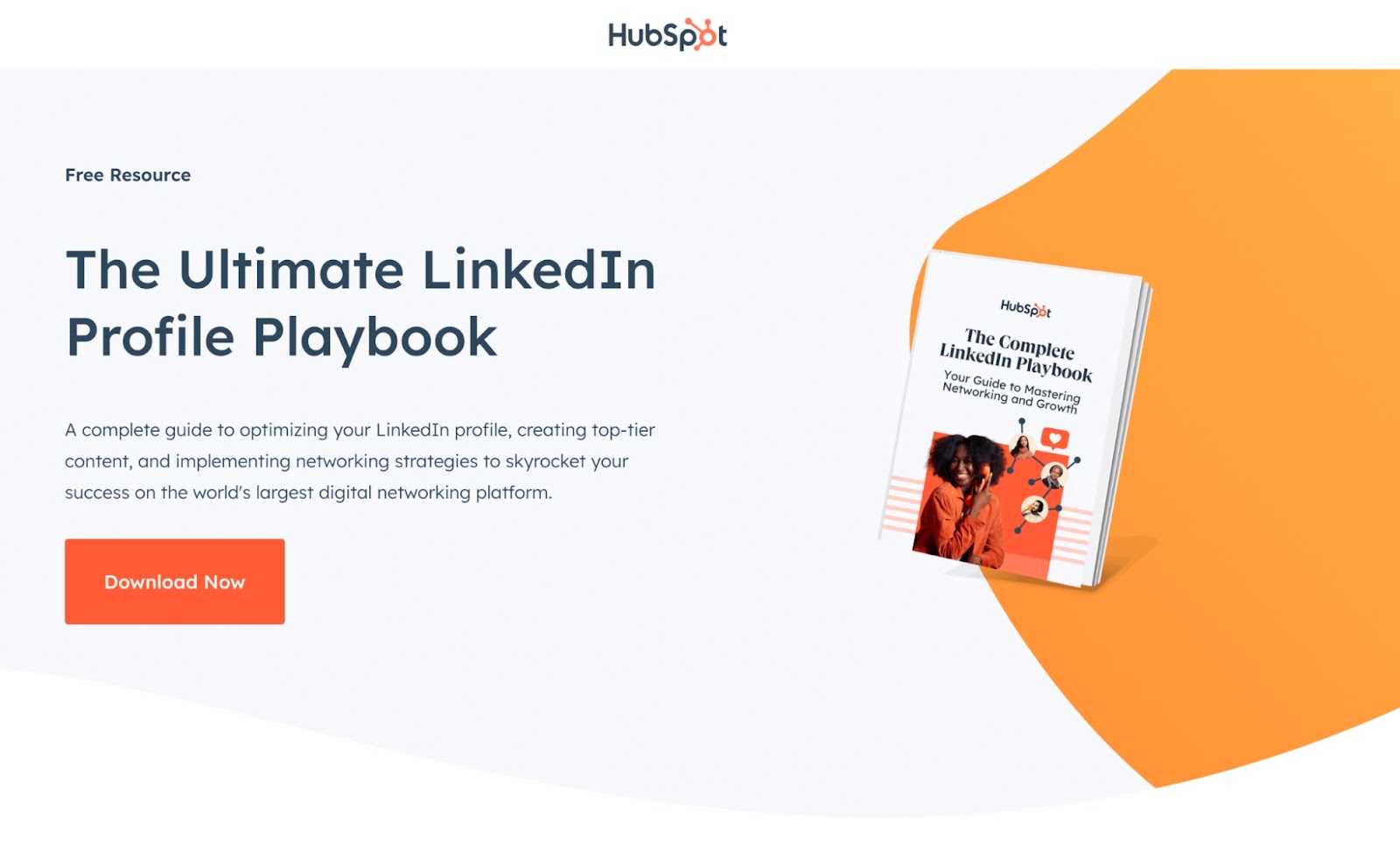
When you scroll down the page, you can get more information about the ebook. But you won’t see other links that take the focus away from downloading the guide.
Improve Page Load Speed
Improving page load speed improves the user experience. To keep users on the page and enable more conversions.
Most pages should be able to load their main content within 2.5 seconds, according to Google.
You can use Semrush’s Site Audit tool to discover any pages on your website that need load speed improvement.
Open the Site Audit tool and click on “Create project.”

Enter your domain and name the project. Then, click “Create project.”
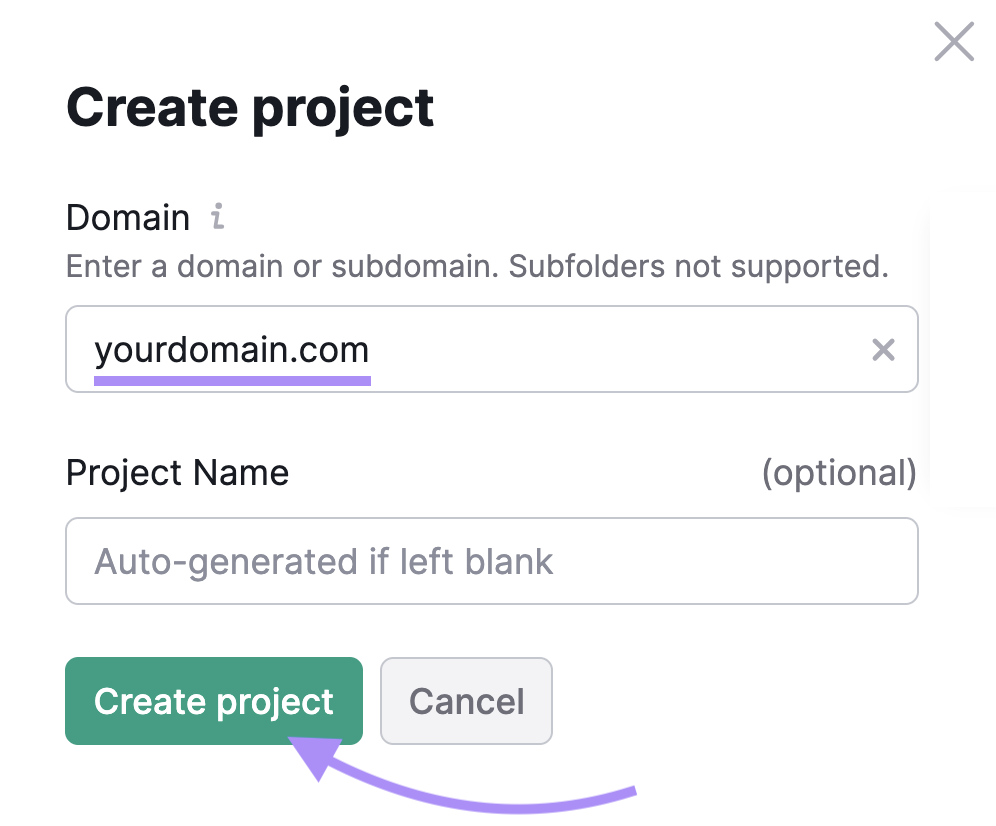
Follow the prompts to configure your basic settings for the audit. And click “Start Site Audit.”
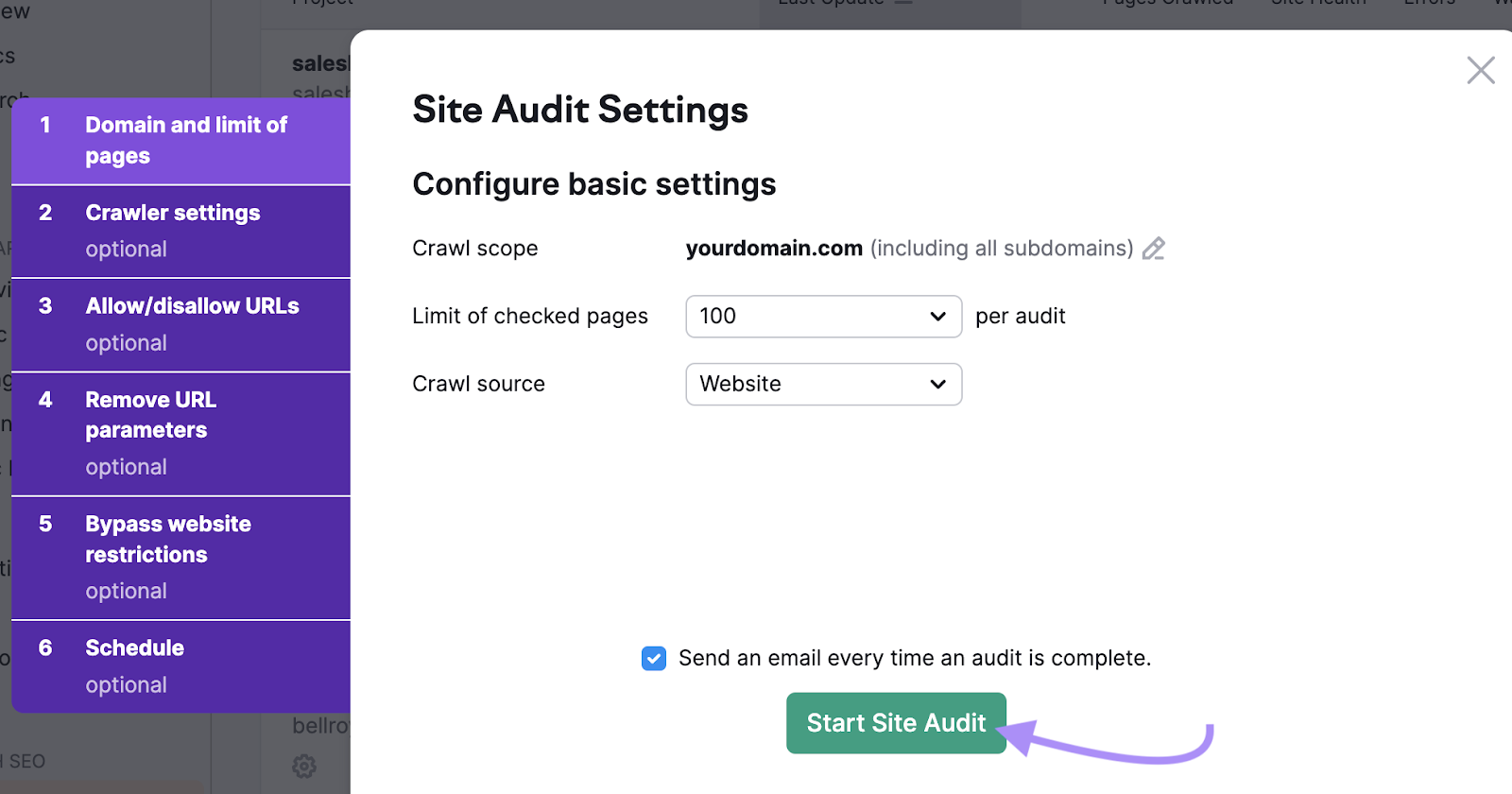
When the audit is ready, click on the “Issues” tab in your dashboard.
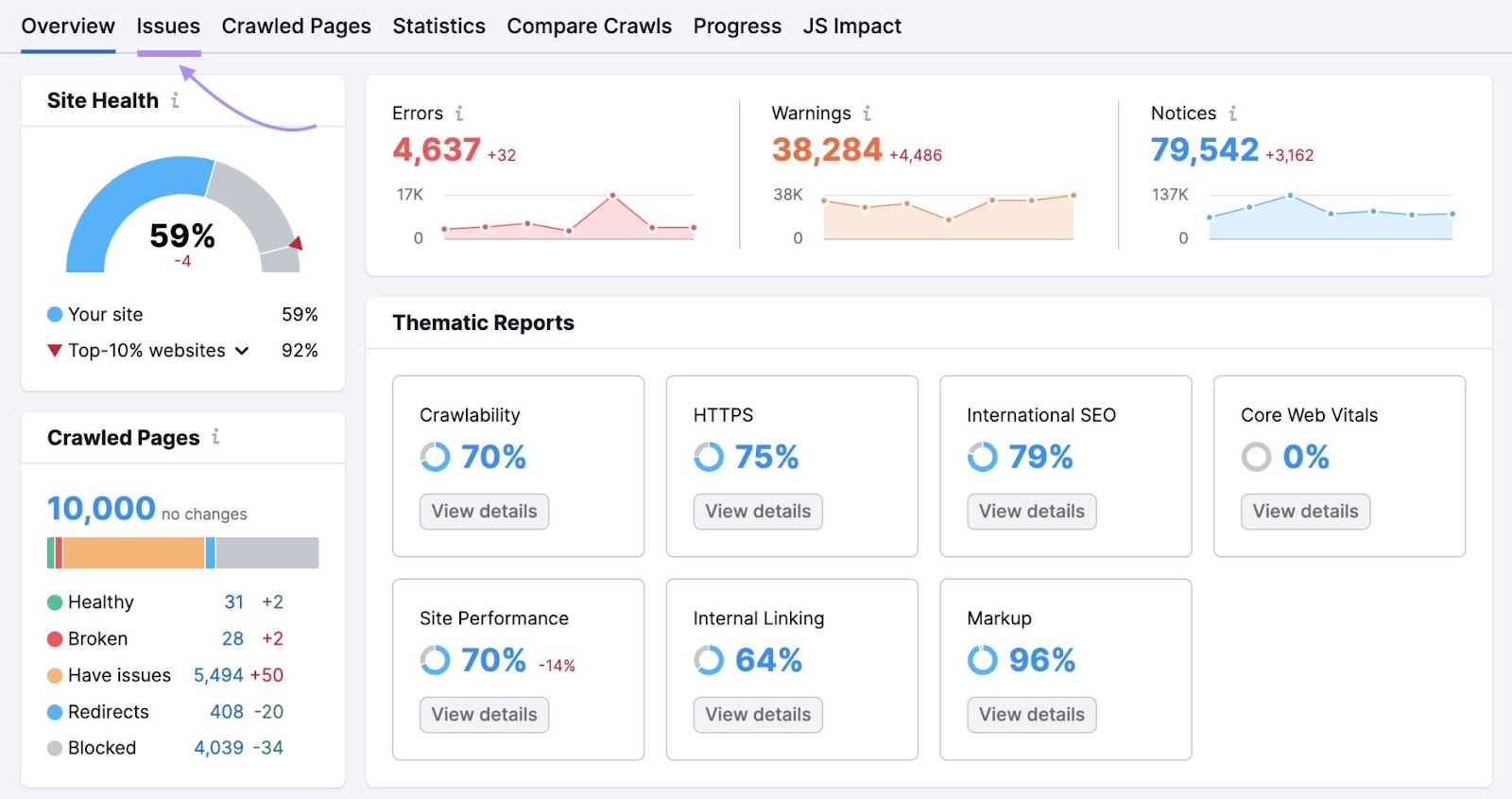
Enter “speed” in the search bar at the top of the table. And you’ll see any pages that are taking too long to load in the table.

Some of the most common tactics to improve page load speed include:
- Compressing images to reduce file sizes
- Reducing the number of elements on the page—including images
- Enable caching to allow browsers to store static resources locally
- Implement lazy loading, which loads images only when they come into the user’s view
Apply What You’ve Learned from High-Converting Content
Analyzing which pages have driven the most conversions allows you to see which tactics have worked in the past. Then, you can implement them on other pages.
You can use Google Analytics 4 (GA4) to do this.
Open GA4 and click on “Reports” in the left-hand sidebar. Then, select “Engagement” under “Life cycle” and click “Pages and screens.”
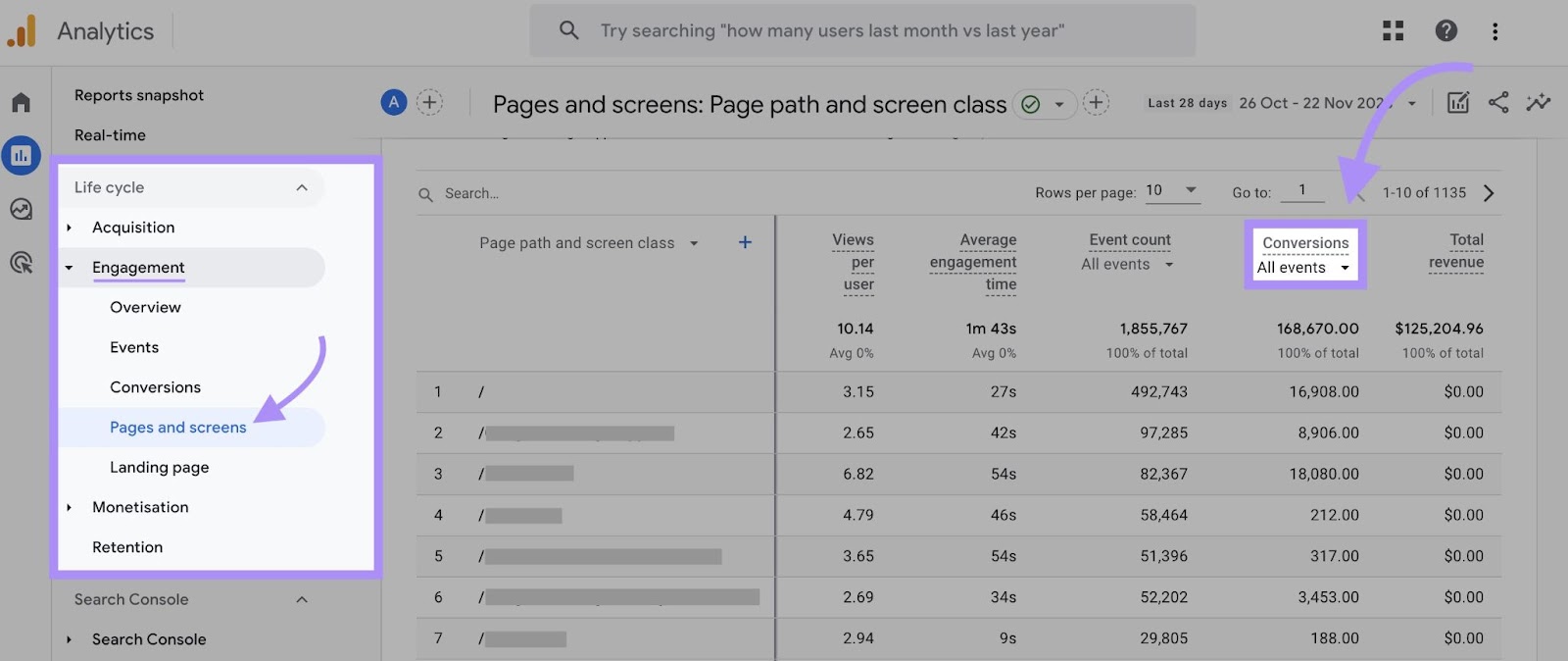
You’ll see a table that shows how different pages drive conversions. Filter them by a specific type by clicking on “All events”at the top of the “Conversions” column.
You may learn that a particular page was effective for driving a specific conversion type—such as booking a demo. Visit that page to identify which elements could be conversion drivers that can be applied to other pages.
For instance:
- Compelling visuals
- Clear and concise copy
- Prominent CTA placement
- Actionable advice
- No navigation bar
- Conversational, jargon-free language
Prioritize Above-the-Fold Content
Prioritizing above-the-fold content means focusing on the page elements that users immediately see without scrolling. Which captures users’ attention and encourages them to take your desired action.
Here’s how to optimize above-the-fold content.
- Use compelling, clear, and concise messaging that communicates the value proposition or main purpose of the page. Like in the Basecamp homepage example below.
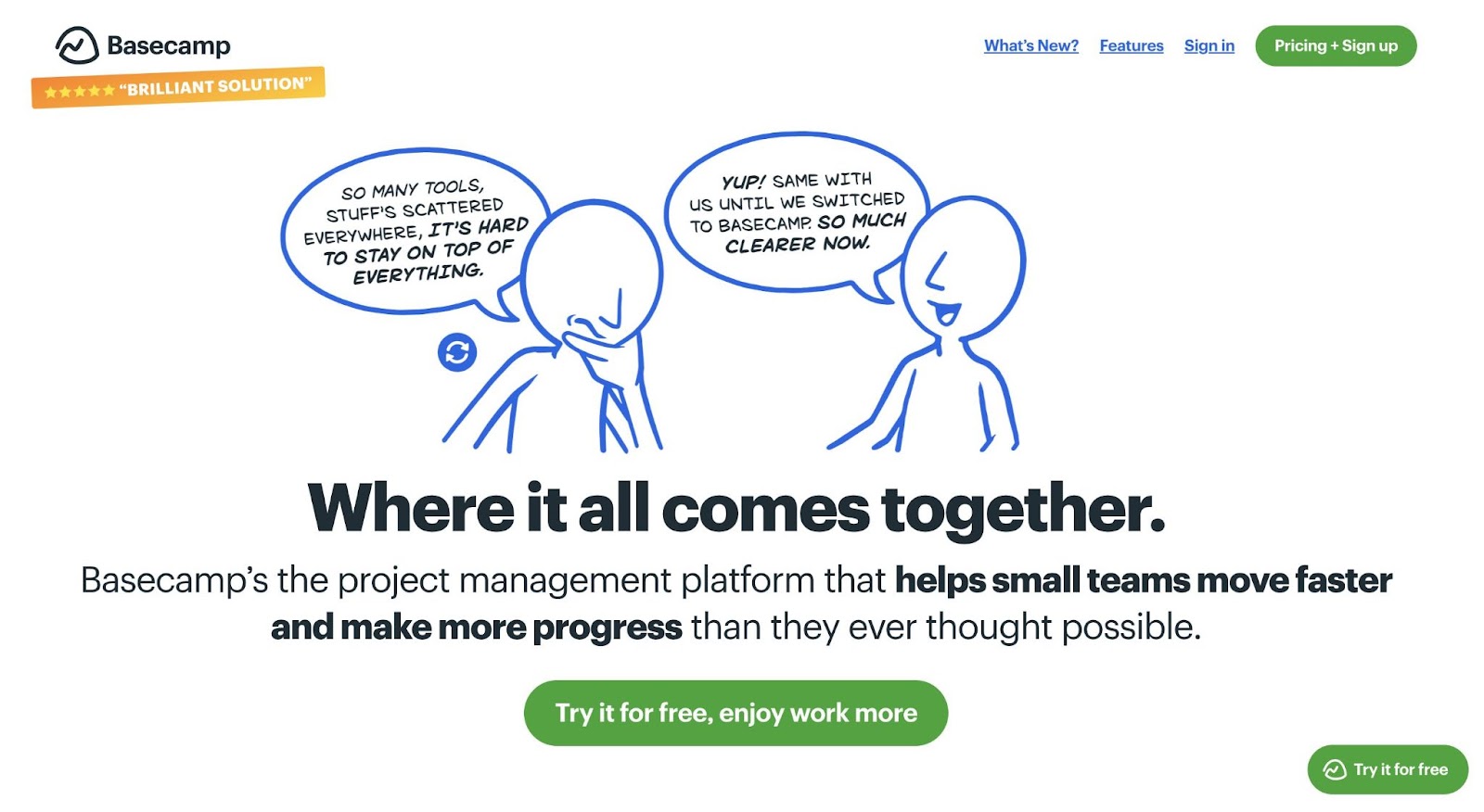
- Place the primary CTA in a visible location. For example, we’ve included one right below the subheading on this page.
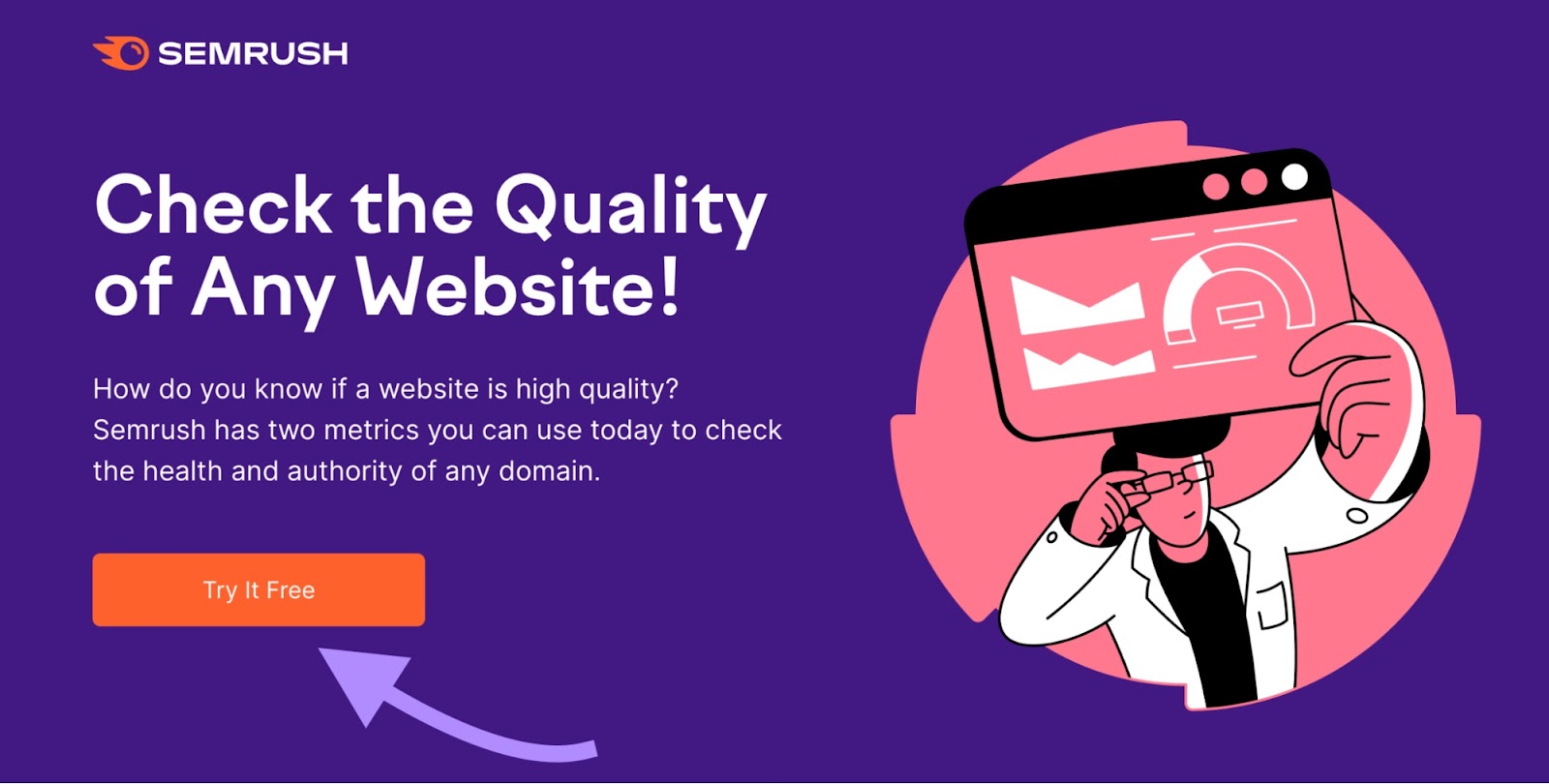
- Use eye-catching, high-quality visuals
- Allow for plenty of white space to ensure the page doesn’t look cluttered
Revamp Your Headlines and Subheadings
Effective headlines highlight the key information and calls to action. And also structure the content and make it scannable.
How can you make your headings as strong as possible?
Use action words (“drive,” “improve,” “increase,” etc.), include relevant keywords, and highlight the benefits of your product or service.
Or, try posing questions to pique users’ curiosity.
Headlines and subheadings are also ideal for A/B testing.
CRO Tools to Help You Execute Your Plans
Here are a few of the best tools to help you carry out the conversion rate optimization process and measure your efforts:
SplitSignal
SplitSignal is an A/B testing tool that allows you to formulate your hypothesis, select variants, and launch your test in a few clicks.
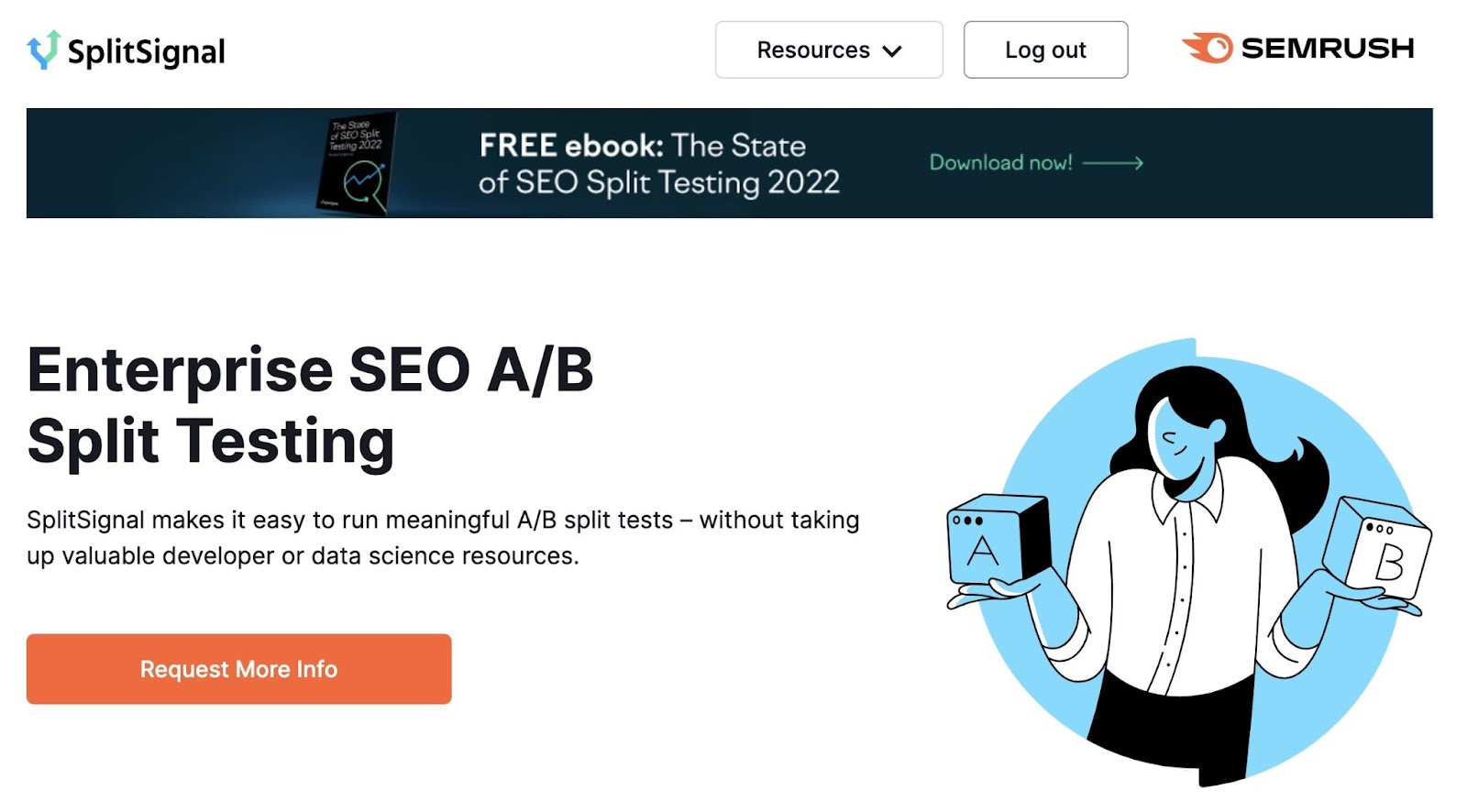
You can install this tool with a snippet of JavaScript in just a few minutes. Without needing help from a developer.
And you can test titles, headings, element placement, and more.
Landing Page Builder
Landing Page Builder is a tool that helps you build and launch landing pages at scale with a simple drag-and-drop editor. And lets you use A/B testing to improve conversions.
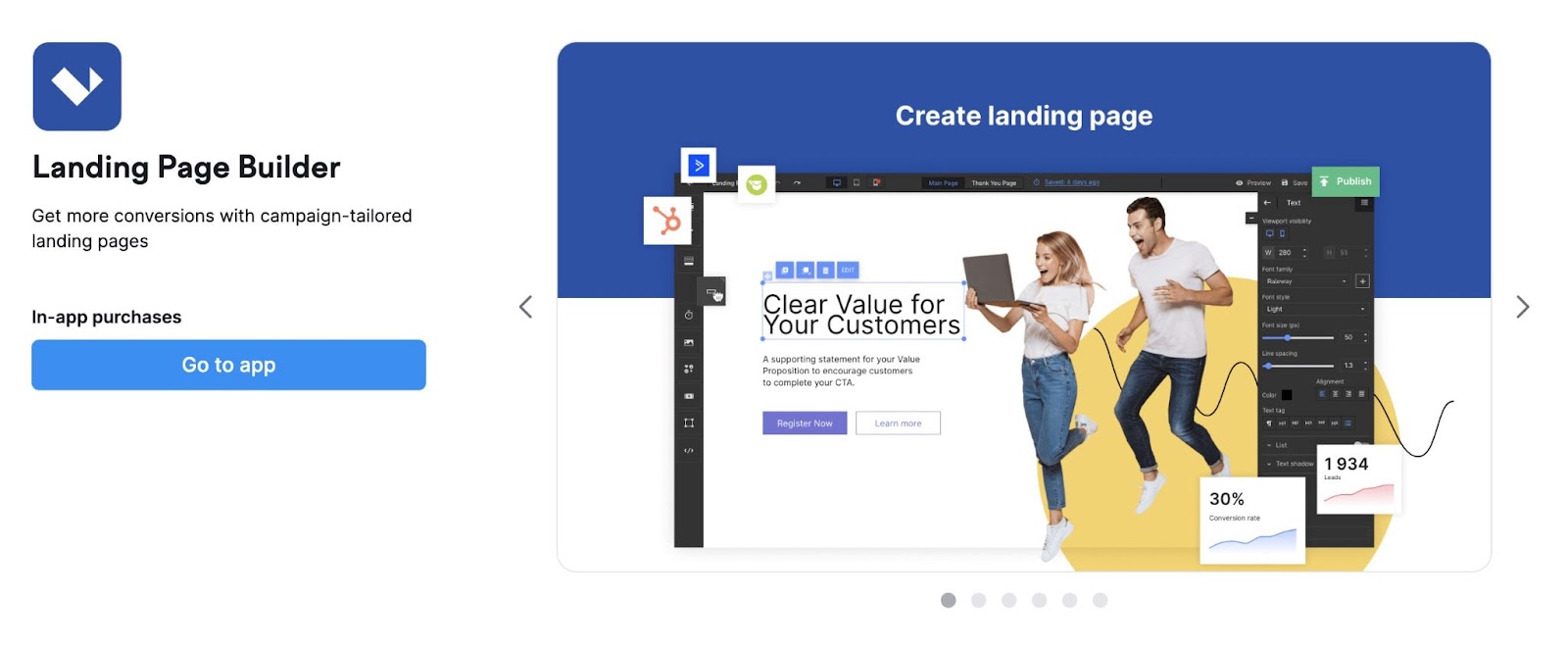
The tool makes the process of building a landing page fast and easy because there are 400+ templates. To cover just about every use case.
You can also create Smart Sections—custom elements that you can use across all your landing pages without having to start from scratch.
Plerdy
Plerdy is a set of CRO tools that focus on user experience and SEO. And it integrates with Semrush.
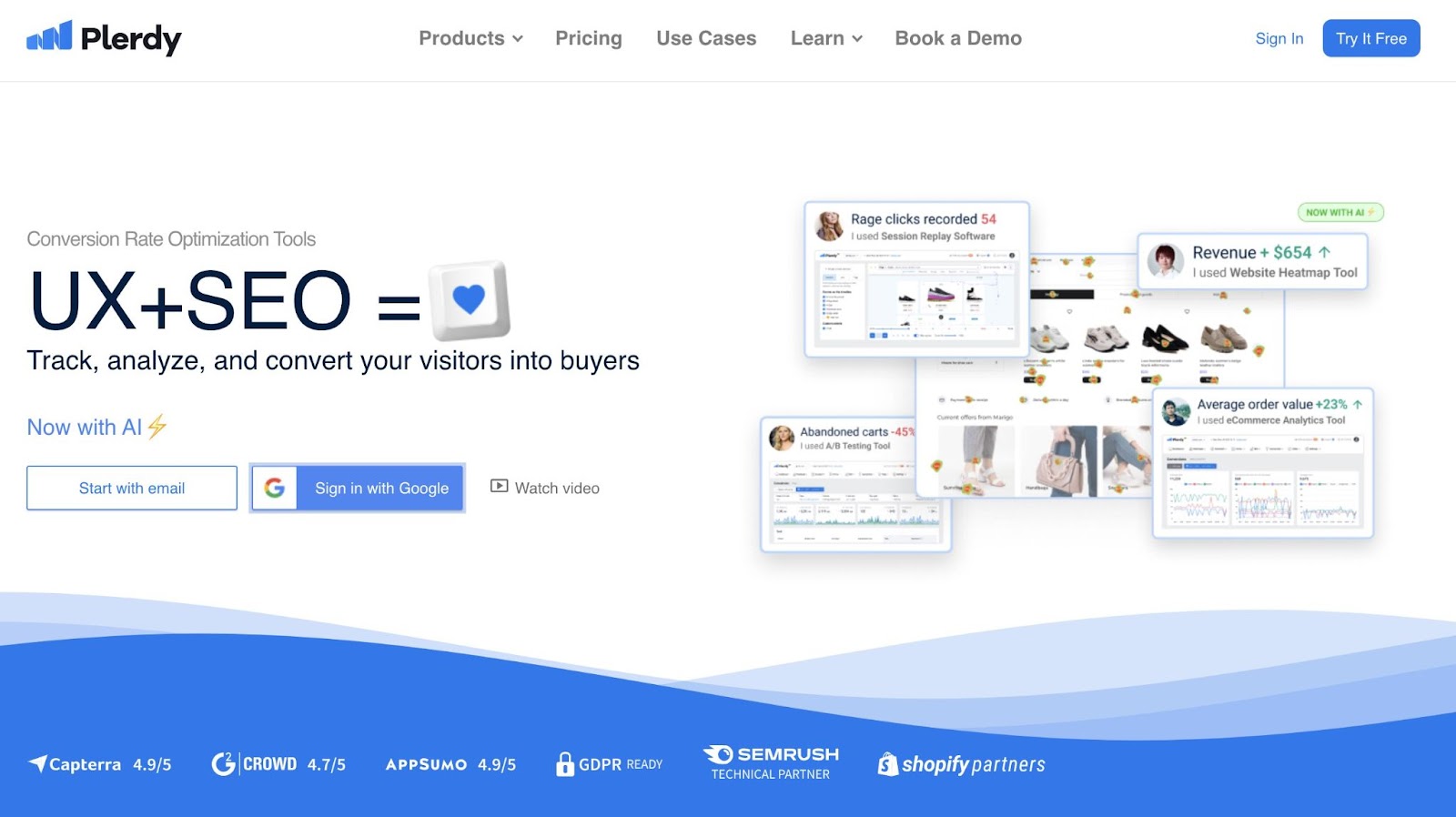
The Website Heatmap Tool allows you to see the most-clicked elements on your pages to discover what entices users the most.
With Funnel Analysis, you can learn how your website visitors behave at every stage of your funnel. So you can find out where to make improvements.
Hotjar
Hotjar is a platform that includes website heatmaps and behavior analytics functions that help you better understand how your audience behaves on your website.
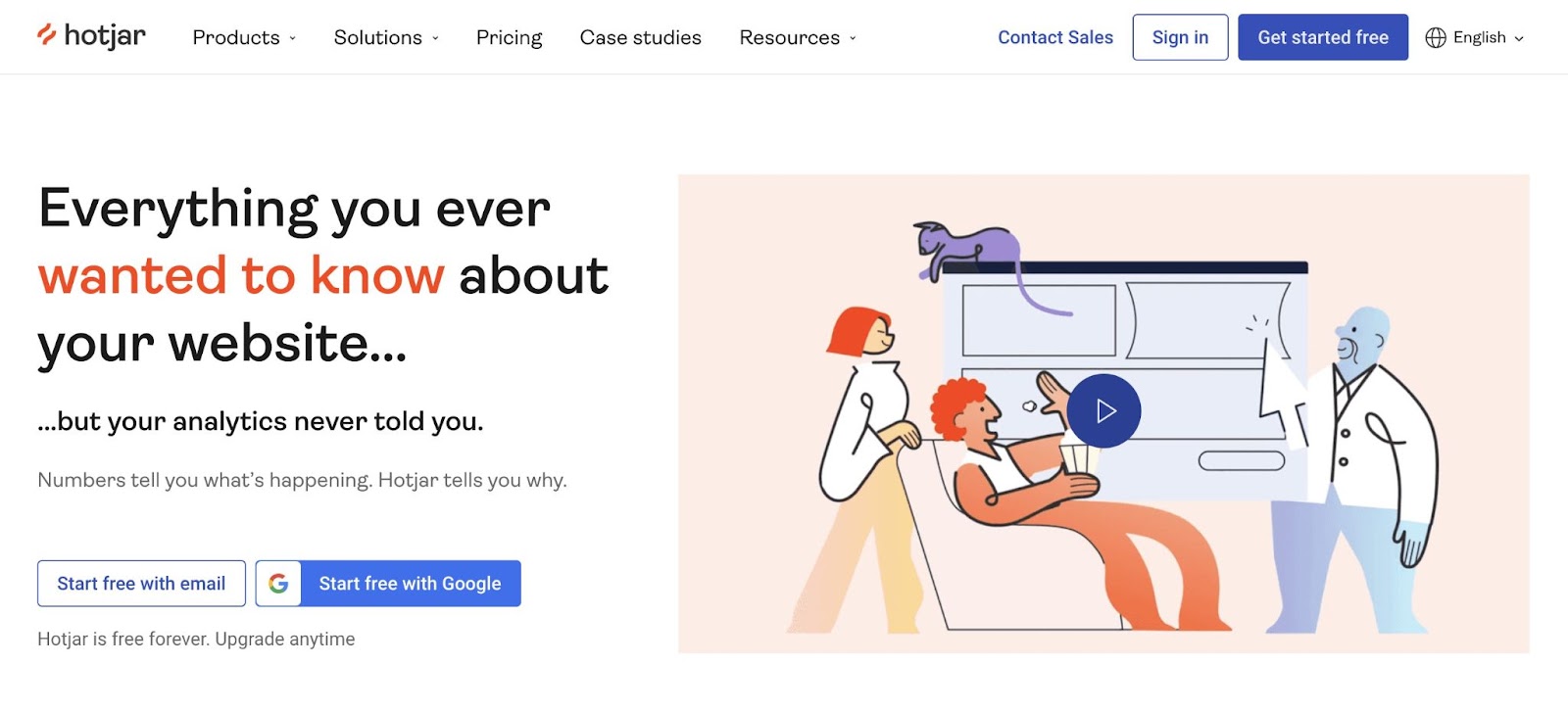
Its heatmaps capture click information as well as actions like hesitations. And can identify where the issues lie on pages that aren’t converting.
Optimizely
Optimizely is a platform with tools that let you conduct experiments like A/B and multivariate tests to find what’s working. And make adjustments to increase conversion rates.
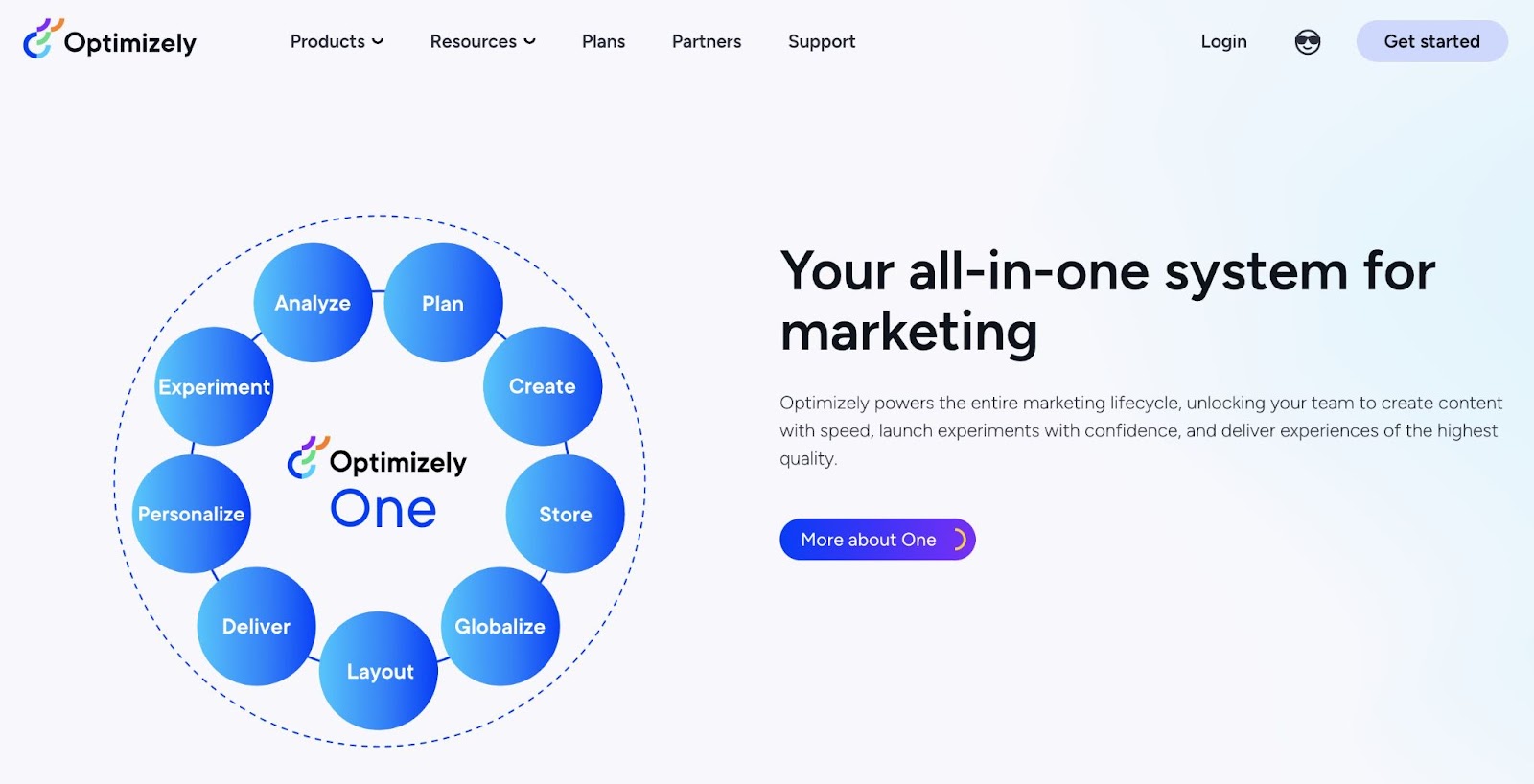
It’s flexible and easy to use. And the reporting feature provides you with detailed insights into user interactions. So you can decide which version is the winner.
HelloBar
HelloBar is a pop-up builder that allows you to easily add forms to your website.
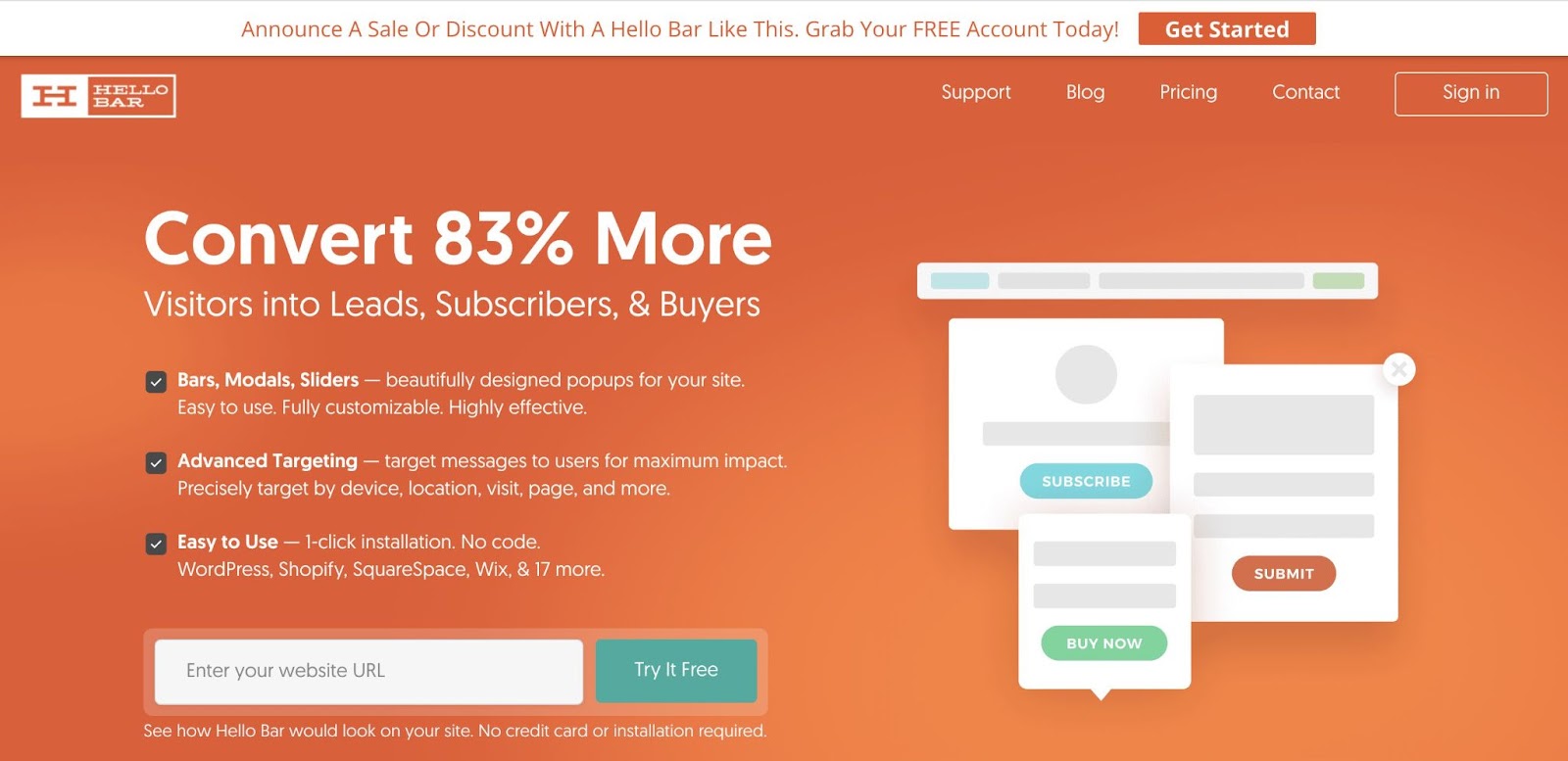
These pop-ups come in different types, but they can all be used to convert website visitors into leads and customers.
The tool also offers access to A/B testing, custom reports, and analytics.
Start Your Website Conversion Rate Optimization Journey
Every website visit has potential.
And effective CRO tactics can turn that potential into tangible benefits.
Of course, it’s easier with the right approach and the right tools.
If you’re ready to get started with CRO, begin with the essentials—like knowing your audience. Check out our One2Target tool to get the data you need.
